Chiropractic therapy
Chiropractic therapy raises questions as to what it is and how safe; this covers too the rationale for manipulative therapy.
The premise is roughly as follow; chiropractic treatment centres around the maintenance of full, normal movement of the spinal joints, and of course in the ankles, knees, hips and shoulders too, and optimizing biomechanics throughout the body. That would include the TMJ too.
The parts of the Vertebral Subluxation Complex are as follows.
- Dyskinesis, or hypomobility; too little movement.
- Altered biomechanics leads to tissue changes.
- That would include physiological and biochemical changes.
- These movement and chemical change cause altered activity in the nervous system.
- That alters the motor patterns that drive the muscles.
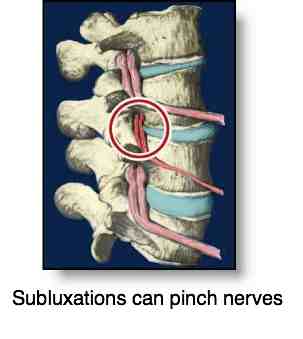
Chiropractic therapy
Chiropractic therapy asks just what is the philosophy behind the manipulative treatment of joint pain?
So, what does that mean in English?
For one reason or another, a joint becomes fixated. It's less mobile, or HYPOmobile. That could be due to sitting too long, sleeping on your stomach, a leg length inequality, an injury; we could go on.
And on ...
Take this lady's foot for example. She fell down the stairs and subluxated in the cuboid bone in her right foot. Compare it with the left - can you see the difference:
- The calcaneo cuboid
joint is reduced and the bone itself is displaced? Believe me, it's less
mobile, or hypomobile in our jargon.
- That changes the way the whole foot works, altered biomechanics. What's more these changes work their way up the kinetic chain - it has knock-on effects in the knee, hip, sacroiliac joints, and all the way up to her skull. She gets bad headaches since the fall. Just watching her walk and you can see it.
- This brings about biochemical changes: can you see the whiteness along the edges of the bones in that joint, compared to the normal left foot? That's hyaline cartilage dying, starved of normal nutrients.
- Within this little joint are dozens of tiny mechano and chemoreceptors. They are detecting these changes and bombarding the spinal cord. The spinal cord starts firing off pain signals via a tract called the STT to the parietal lobe of the brain to the limbic system where emotion is experienced. What's more, they bombard the autonomic system; it's been proved that they particularly affect blood flow.
- Pain and fixations in the foot change the gait. That's what will usually bring the patient to the chiropractor; change of gait starts to cause pain elsewhere, often in the pelvis.
- A thorough examination to include physical, neurological, orthopedic examinations
- Specific spinal analysis before Chiropractic Therapy:
- Specific restoration of normal biomechanics by means of the adjustment
- Specific rehabilitation program
- Referral for co management if appropriate
- Appropriate attention to ergonomical considerations and other possible causes of biomechanical dysfunction.
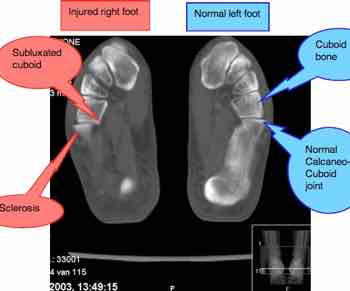
Leg length inequality
It has been fully established now that a short leg causes increased risk of hip and knee arthritis, curvature of the spine and degenerative lumbar spine changes.
That examination should include an examination of the erect pelvis; are there obvious postural changes?
Case management protocol includes…..
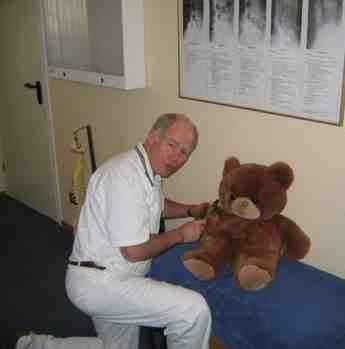
The purpose of chiropractic therapy (the "adjustment") is…
"...
to restore normal movement and resolve the resultant biomechanical,
physiological and neurological effects of segmental hypomobility."
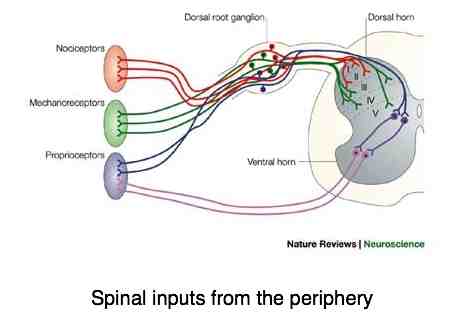
Other unusual neurological effects
Other strange and not easily explained things happen after chiropractic adjustments of the spine. Decades-long infertile women suddenly fall pregnant, heartburn is relieved and colic in babies healed; blood pressure drops, menstrual cramps and abnormal bleeding normalises.
Chiropractic researchers are only now beginning to investigate these less easily explained adverse neurological effects of subluxations.
And after a fall on the lower back a patient with six months
diarrhoea after taking anti-inflammatory drugs for a few days after a
fall is suddenly cured; healed not injured.
Notice the tracts from proprioceptors (bottom left) within the joint capsule; those that feed into the Ventral Horn, and thence via tracts within the cord to the Dorsal Horn. These tracts have an INHIBITORY effect on the Dorsal Horn.
-
HYPOMOBILITY >>> DECREASED PROPRIOCEPTOR activity
>>> DECREASED IBHIBITION OF THE PAIN (and other) NOCICEPTOR
ACTIVITY firing via C fibres into the Dorsal Horn.
Simultaneously, -
BREAKING DOWN OF CELLS in the Hypomobile Joint >>>
INCREASED firing of SPINAL CHEMOSENSITIVE NOCICEPTORS >>>
Inflammation AND Increased input into the Dorsal Horn.
Double wammy: Increased noxious input into the dorsal horn + Decreased inhibition from Proprioceptors.Nett result:
Greatly increased input into the Spinal Thalamic Tract >>> Thalamus >>> Parietal brain where pain is perceived.
Biomechanical effects of hypomobility
- Altered intersegmental movement patterns
- Results in compensatory changes in motor patterns, etc.
- Creates cellular damage in sites of biomechanical stresses
- Immobilisation caused by arthritis
"Loss of normal motion within a joint results in changes in every structural component of the joint; subchondral bone to the synovium, from meninges to the ligamentum flavum."
References:
- Amiel D, et al. Acta Ortho Scand, 1982
- Palmoski M, et al. Arth Rheum, 1979
- Paine & Haung. J Neurosurgery, 1972
- Lantz C. Chiro Res J, 1988
- Enneking & Horowitz. J Bone Joint Surg, 1972
- Evans EB, et al. J Bone Joint Surg, 1960
Current orthopedic literature recognizes that changes in the pattern of forces transmitted through joints, which occurs during the immobilization process, is universally recognized as contributing to connective tissue degeneration and local changes in the chemical composition of that tissue…
We also know that mechanical failure of ligaments, discs, capsules and other connective tissue can result from local variations in chemical composition.
"Measurable changes within the joint complex occur within one week of the onset of hypomobility."
Effects of hypomobility on the IVD
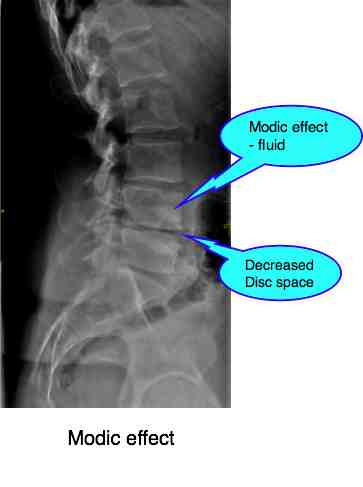
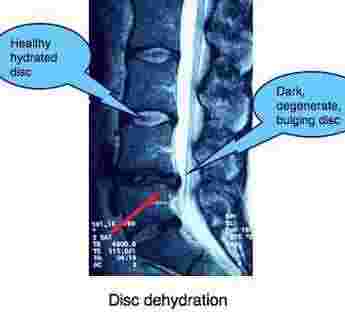
The nucleus pulposus is the the area of the disc most susceptible to dessication. It is dependent on movement for nutrition and survival...
Lack of appropriate intersegmental spinal movement can significantly reduce the dynamic pressure gradient between the intradiscal tissues and the subchondral areas of spongiosa in the vertebral bodies...
This sacrifices the key mechanism by which nutrients and water replenish the disc and by which metabolic waste leaves the disc...
Putting it together...
- Loss of normal movement leads to…
- Changes in how all tissues involved are stressed and replenished, which causes…
- Chemical changes within those tissues and…
- Predisposes them to mechanical failure giving us…
- A good reason justifying chiropractic therapy to restore normal movement through spinal chiropractic adjustments.
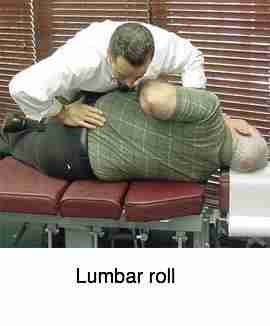
Anti-inflammatory drugs and chiropractic therapy
Chiropractors in general are not against the sensible use of drugs, but they are so abused, and cause soooooo many deathsssss and serious distressesssss that we seriously question the way Medicine dishes out bucketfuls of pills.
Research done on 37 000 people who suffered from a stroke found a 20% - 250% increase in the incidence of stroke if they had taken anti-inflammatory drugs (depending on the drug) in the previous 30 days.
- More about so-called Free Pain Pills ...
- Painkillers and stroke risk factors
INITIAL CLINICAL CONSULTATION FEE
Could a too-high first consultation fee be the limitating factor in the growth of your practice? New patients are the life blood of every practice...
In grateful acknowledgement
Dr. Lisa K. Bloom, D.C.
Diplomate of the International Board of Chiropractic Neurology
Diplomate in Applied Chiropractic Sciences
Associate Professor, Diagnosis and Practice Department of New York Chiropractic College.
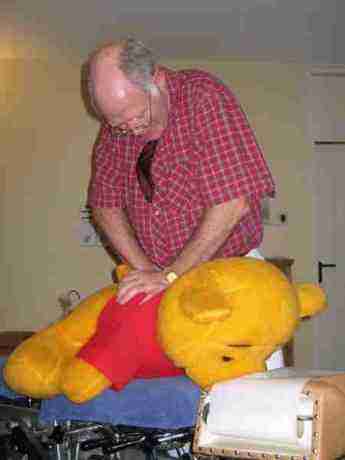
APPLICATION OF CHIROPRACTIC THERAPY
The beauty of being a
chiropractor is that days are filled with challenging cases. Many have
been treated medically for years without success. Research shows most can be helped
with chiropractic, some not. Few are "cured" whatever the therapy, hence the need for Chiropractic Maintenance care ...
Sometimes it might be a serious whiplash injury, other times a hereditary condition, often a combination of factors as in this very serious case.
- TINGLING IN FEET AND LEGS CASE FILE ...
MORE INTERESTING LINKS @ CHIROPRACTIC THERAPY
- Home
- Why Chiropractic Help?
- Chiropractic Therapy
Did you find this page useful? Then perhaps forward it to a suffering friend. Better still, Tweet or Face Book it.

